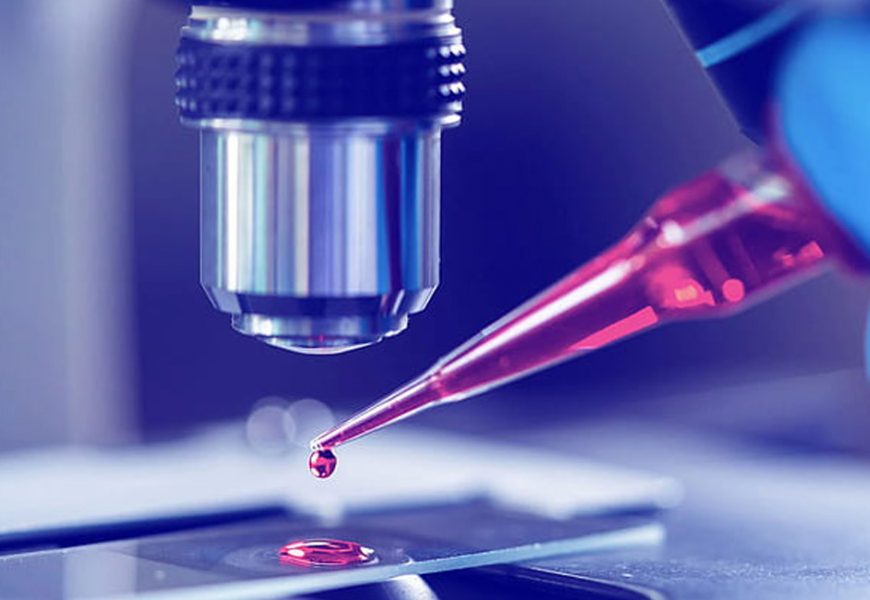The integration of AI in clinical pathology is transforming how diagnostic labs operate, introducing efficiency, accuracy, and speed into pathology workflows. AI for lab diagnostics enables pathologists to process large volumes of data, identify patterns in tissue samples, and make diagnoses faster than ever. With advancements like Medical AI Chatbots for patient queries, clinical data management systems, and machine learning tools for tissue analysis, AI is optimizing every step of the pathology process. This guide delves into how AI-powered tools are reshaping clinical pathology, from lab diagnostics to real-time data management.
The Role of Medical AI Chatbots in Clinical Pathology
Medical AI Chatbots are emerging as valuable assets in pathology labs, especially in handling patient queries, explaining lab results, and offering real-time updates. For patients awaiting diagnostic outcomes, Medical AI Chatbots provide a sense of connection and reduce uncertainty. These chatbots can answer frequently asked questions and provide patients with insights into their lab results, freeing up pathologists and lab technicians to focus on analysis.
Benefits of Medical AI Chatbots in Pathology Labs:
- Enhanced Patient Communication: Patients can receive answers and explanations regarding their diagnostic process and results.
- Reduced Administrative Load: By automating responses, chatbots reduce the need for administrative staff to handle routine inquiries.
- Real-Time Updates: Medical AI Chatbots can inform patients when their samples are received, analyzed, and ready for review.
In clinical pathology, Medical AI Chatbot help improve patient satisfaction and engagement, allowing lab staff to concentrate on diagnostic tasks.
Machine Learning in Tissue Analysis: Transforming Diagnostics
Machine learning in pathology labs has brought unprecedented precision to tissue analysis. AI-powered algorithms are trained to identify specific patterns in tissue samples, which aids in diagnosing diseases at an early stage. By recognizing subtle markers and abnormalities that may be challenging to detect manually, machine learning enhances diagnostic accuracy and reduces the potential for human error.
How Machine Learning Benefits Pathology Labs:
- Enhanced Accuracy: Machine learning algorithms can detect disease markers with high precision, ensuring accurate results.
- Improved Efficiency: Automated tissue analysis speeds up diagnosis, enabling labs to process more samples in less time.
- Predictive Analytics: AI predicts patient outcomes based on tissue samples, guiding pathologists in treatment recommendations.
With machine learning, AI for tissue analysis and diagnostics is advancing pathology workflows, enabling quicker, more reliable diagnostic processes that benefit both patients and providers.
The Importance of Clinical Data Management in Pathology
In pathology, clinical data management is fundamental to ensuring accurate diagnostics and streamlined workflows. Managing and organizing large datasets is crucial for AI tools to operate effectively. Clinical data management systems centralize data from multiple sources, such as patient history, previous lab results, and imaging reports, providing pathologists with comprehensive, organized, and accessible information.
Benefits of Clinical Data Management in Pathology Workflows:
- Data Accessibility: Enables pathologists to access and analyze all relevant patient data in one place, reducing time spent searching for records.
- Improved Data Security: Clinical data management systems offer secure storage and controlled access, ensuring patient privacy.
- Enhanced Collaboration: Centralized data allows for better coordination among pathologists, technicians, and other healthcare professionals.
By improving data accuracy and accessibility, clinical data management supports AI-driven pathology solutions, enabling more efficient, seamless, and accurate diagnostics.
Predictive AI in Pathology Workflow Management
Predictive AI is transforming pathology workflows by analyzing historical data and identifying patterns in lab operations. Predictive AI for pathology workflow management anticipates peak times, allocates resources efficiently, and ensures that pathology labs operate at optimal capacity. This approach enhances lab productivity, reduces bottlenecks, and supports faster diagnostic turnaround times.
Applications of Predictive AI in Pathology Labs:
- Workflow Optimization: Predictive AI adjusts lab schedules based on anticipated sample volumes and staffing needs.
- Resource Allocation: Ensures that equipment, staff, and resources are used efficiently to prevent delays.
- Reduced Processing Time: Predictive insights enable labs to plan for high-demand periods, improving patient wait times and lab efficiency.
By using predictive AI, pathology labs can enhance their operational efficiency and respond to patient needs faster, making it a valuable tool in modern lab diagnostics.
What is a Medical Scribe, and How Does AI Support Their Role in Pathology?

What is a medical scribe, and how does their role integrate with AI in clinical pathology? In pathology, a medical scribe plays an essential role in documenting procedures, tracking specimen data, and ensuring that each step of the diagnostic process is accurately recorded. As AI tools streamline diagnostic workflows, medical scribes benefit from clinical data management systems and AI-powered tools, enabling them to perform their tasks more efficiently and with greater accuracy.
How AI Enhances the Role of Medical Scribes:
- Automated Data Entry: AI assists in documenting lab results, reducing the time medical scribes spend on manual entries and allowing them to focus on data accuracy.
- Real-Time Updates: Clinical data management systems provide scribes with immediate access to updated patient data, improving documentation accuracy.
- Improved Record-Keeping: AI ensures that all diagnostic steps are documented comprehensively, helping medical scribes maintain thorough and reliable records.
By supporting medical scribes with automation and data access, AI in clinical pathology reduces administrative burdens, enhances patient data quality, and contributes to more reliable diagnostic workflows.
Case Study: AI Implementation in a Pathology Lab’s Workflow
A regional pathology lab recently integrated AI-powered tools to streamline its clinical pathology workflows. The lab implemented machine learning for tissue analysis, predictive AI for resource management, and clinical data management for data organization. Additionally, they deployed a Medical AI Chatbot to handle patient inquiries about test status and result explanations.
The results were promising: the lab experienced a 30% increase in diagnostic accuracy, a 20% improvement in workflow efficiency, and a marked reduction in patient wait times for lab results. The Medical AI Chatbot further improved patient engagement, helping them stay informed about their diagnostic process. This case study highlights the transformative potential of AI-powered tools in pathology, offering improvements in efficiency, accuracy, and patient satisfaction.
Steps to Integrate AI in Clinical Pathology Workflows
For pathology labs aiming to implement AI in their workflows, here are key steps to ensure a successful integration:
- Assess Current Workflow Needs: Evaluate the current pathology workflow, identifying bottlenecks and areas for potential improvement.
- Implement Clinical Data Management: Establish a system to organize patient data, ensuring all information is accessible and accurate for AI analysis.
- Select AI-Powered Diagnostic Tools: Choose machine learning algorithms for tissue analysis and predictive AI for workflow optimization.
- Incorporate Medical AI Chatbots: Deploy chatbots to handle patient interactions, answering inquiries and reducing administrative tasks.
- Monitor and Optimize: Regularly assess the AI tools’ performance, focusing on accuracy, processing time, and diagnostic outcomes.
Integrating AI into clinical pathology workflows involves preparation and a commitment to continuous improvement, but the efficiency and accuracy gains make it a highly beneficial investment.
User Experience: The Impact of AI on Pathology Patients and Providers
AI-powered tools have a significant positive impact on both patients and providers in clinical pathology. For patients, Medical AI Chatbots improve communication, providing quick answers to questions and updates on test results. This enhanced interaction helps reduce patient anxiety and improves overall satisfaction with the diagnostic process.
For pathology providers, AI streamlines diagnostic workflows, enabling them to analyze samples quickly and accurately. Clinical data management systems ensure they have organized and accessible patient data, reducing administrative tasks and enhancing diagnostic accuracy. Pathologists can focus on their expertise while AI handles routine tasks, ultimately benefiting both their workflow and patient care quality.
Conclusion
AI-powered tools are transforming clinical pathology workflows, offering faster, more accurate diagnostics and improving operational efficiency. From Medical AI Chatbots that assist patients to clinical data management systems that provide organized, accessible information, AI is reshaping how pathology labs operate. By incorporating machine learning for tissue analysis and predictive AI for workflow management, pathology labs can enhance their services, delivering better care for patients and more streamlined processes for providers.
The future of clinical pathology is set to become even more AI-driven, providing an environment where efficiency and precision are the norm. As AI technologies continue to evolve, their impact on clinical pathology workflows will grow, ensuring that labs can keep pace with demand while improving diagnostic quality and patient experiences.
FAQs: Understanding AI’s Impact on Clinical Pathology
How is AI improving clinical pathology workflows?
AI enhances pathology workflows by automating diagnostics, managing data, and streamlining patient interactions. With tools like Medical AI Chatbots and clinical data management, AI improves efficiency, reduces errors, and speeds up diagnostics in pathology labs.
What is a medical scribe’s role in a pathology lab, and how does AI assist them?
In pathology, a medical scribe documents procedures and manages specimen data. AI supports medical scribes by automating data entry and providing organized patient information through clinical data management systems, reducing manual tasks and improving record accuracy.
How does clinical data management support AI in pathology labs?
Clinical data management ensures all patient information is accessible and accurate, providing a reliable foundation for AI-powered diagnostic tools. It enables pathologists to access complete data, improving diagnostic accuracy and workflow efficiency.









